Have you ever missed out on securing a domain because it expired before you noticed? Managing domain expiry dates can be tricky, especially when you’re juggling multiple domains. In 2024, there are plenty of tools designed to help you stay on top of domain expiry. But which ones are the best? Let’s dive in and explore the top domain expiry tools that will make sure you never lose track of your valuable web properties.
Why Doing Domain Name Expiry Check Is Crucial in 2024
But first, let’s see how exactly a domain expiry tool works and why you would need its use cases. Domain expiry tools simply help you stay on top of domain expiration dates by monitoring and sending reminders. At first, this may seem somewhat redundant, but as soon as the number of active domains grows, people often mismanage and lose their precious domains. Here’s how they work and why they’re important:
How Domain Expiry Tools Work:
- Track the expiration dates of domains you own.
- Send notifications or alerts as the expiry date approaches.
- Offer automated renewal options for convenience.
- Some tools monitor domain availability in case of drop-catching expired domains.
Why You Need to Use These Tools to Do Domain Expiry Lookup:
- Manage multiple domains: When owning several domains, it’s easy to fail to check domain expiry date.
- Protect high-value domains: Avoid losing premium or important domains to competitors.
- Prevent disruptions: Keep your website or business running smoothly without the risk of losing your domain.
- Save time: Automated renewals ensure you don’t have to renew each domain manually.
Using domain expiry tools alongside domain buying sites and domain finder tools will allow you to find the ideal URL, register, and keep it safely for as long as you need it.
10 Top Domain Expiry Tools in 2024: Lock Down your Domains Perpetually
Now that we understand how domain expiry tools work and why they can be essential let’s take a closer look at some of the best options available in 2024. Whether you’re managing a few domains or hundreds, these tools offer features that will help you stay organized and avoid any costly lapses in domain ownership. Here are the top domain expiry tools you should consider using this year.
1. Domain Monitor

Domain Monitor is a straightforward tool designed to help you stay ahead of your domain expiry check dates. It provides an easy-to-use platform that tracks your domains and sends timely notifications when they are about to expire. The tool focuses heavily on simplicity, making it perfect for users who want to manage their domain expiry with minimal hassle. It’s ideal for individuals and small businesses that own a handful of domains and need a reliable way to avoid expiration without complex features.
Pros:
- Simple and easy-to-navigate interface: Perfect for users who prefer a minimal learning curve.
- Customizable alerts: Set up notifications to remind you when a domain is approaching its expiry date.
- Bulk tracking: You can manage multiple domains in one place, keeping all your expiry dates organized.
- Affordable: The pricing makes it accessible even for small-scale domain holders.
Cons:
- Limited advanced features: Domain Monitor lacks some of the deeper functionalities found in more robust domain management tools.
- Not ideal for large-scale users: If you manage hundreds of domains or need intricate tracking details, this may not be the best option.
- No automated renewal: You will still need to manually renew domains, as the tool only provides reminders.
Verdict: Domain Monitor is a great choice for users who want a reliable tool to track their domain expiry dates without being overwhelmed by too many extra features. Its simplicity and ease of use make it stand out for small businesses or individuals managing a moderate portfolio of domains. While it may not have advanced automation or extensive features, it excels in providing essential tracking and notifications.
Pricing:
- Basic Plan: $5/month – includes tracking for up to 10 domains.
- Pro Plan: $10/month – includes tracking for up to 50 domains.
- Enterprise Plan: $25/month – includes tracking for up to 200 domains.
2. Namecheap Domain Monitoring
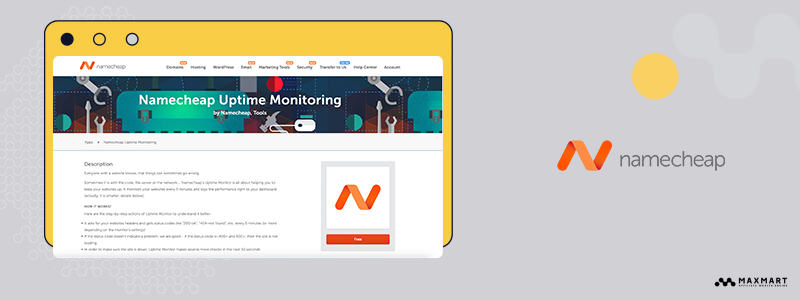
Namecheap Domain Monitoring is a feature offered by one of the most well-known domain registrars, Namecheap. It provides a robust solution for tracking your domain expiry dates, ensuring that you never lose a domain due to missed renewals. The tool seamlessly integrates with Namecheap’s domain management system, giving you access to detailed notifications, renewal options, and status monitoring for all your registered domains. It’s a perfect fit for individuals and businesses already using Namecheap as their domain registrar, simplifying domain expiry management.
Pros:
- Seamless integration with Namecheap accounts: If you use Namecheap for domain registration, this tool becomes a natural extension of your account.
- Automated renewal options: Easily enable auto-renewal to avoid manual renewals and the risk of missing a domain expiry date.
- Real-time alerts: Receive notifications via email or SMS when a domain is close to expiration, giving you ample time to act.
- Affordable pricing: As part of the Namecheap ecosystem, it offers competitive rates for domain expiry monitoring.
Cons:
- Limited to Namecheap-registered domains: If your domains are registered with other services, this tool may not be the best choice.
- No bulk expiry management for non-Namecheap domains: You’ll need to manually input other domain expiry data.
- Basic interface: While functional, the interface is not as user-friendly or modern as other dedicated tools.
Verdict: Namecheap Domain Monitoring is ideal for users who already manage their domains through Namecheap. Its automated renewal options and real-time notifications make it a solid choice for preventing domain expiry. However, if you manage domains across multiple registrars, its limitations could be a drawback. Still, for Namecheap users, it’s a convenient and affordable option to stay on top of expiry dates.
Pricing:
- Free with any Namecheap domain registration – includes basic expiry monitoring and alerts.
- Premium Plan: $10/year – includes advanced monitoring features, SMS alerts, and domain status tracking.
3. DomainTools
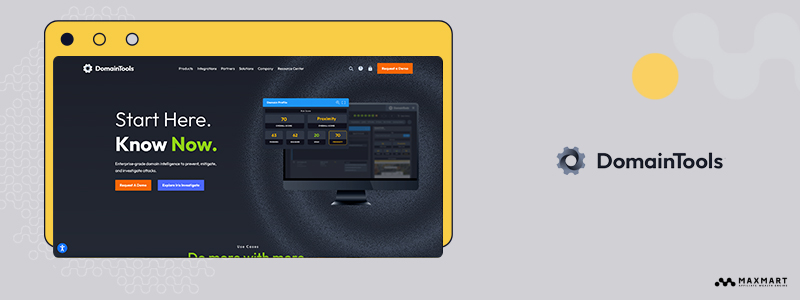
DomainTools is a comprehensive domain management platform that offers a powerful set of features, including domain expiry tracking. While primarily known for its security and threat intelligence tools, DomainTools excels at monitoring the status and expiration of your domains. It is designed for users who need advanced insights and deeper analytics on their domain portfolio. This tool is particularly useful for businesses and power users who require more than just expiry notifications, offering a broad range of data and historical information about domains.
Pros:
- Advanced domain intelligence: DomainTools provides more than just domain expiry tracking; it offers WHOIS history, DNS details, and ownership changes.
- Comprehensive tracking: Track not only expiry dates but also the status of your domain and potential security threats.
- Bulk domain management: Easily track expiry dates for large domain portfolios, making it ideal for businesses with multiple domains.
- Historical data: Access past records of your domain, helping you monitor changes over time and maintain a better grip on your domain assets.
Cons:
- High pricing for advanced features: The extensive range of tools can be costly, making it less suitable for casual users with only a few domains.
- Complex interface: The vast array of features may overwhelm users who only need basic domain expiry tracking.
- No automated renewal: While it tracks domain expiry well, you’ll need to renew domains manually through your registrar.
Verdict: DomainTools is a powerhouse for users who need more than just domain expiry notifications. Its advanced features, including WHOIS history, DNS tracking, and domain status monitoring, make it a great fit for businesses or professionals with large domain portfolios. However, its complexity and higher price point might not be ideal for those looking for a simple domain expiry tool. If your priority is in-depth domain management with added security features, DomainTools is a standout choice.
Pricing:
- Personal Plan: $99/month – includes tracking for up to 100 domains and access to WHOIS history.
- Professional Plan: $499/month – supports large portfolios with up to 1,000 domains and advanced monitoring features.
- Enterprise Plan: Custom pricing – tailored solutions for businesses managing extensive domain portfolios and needing custom features.
4. Expired Domains
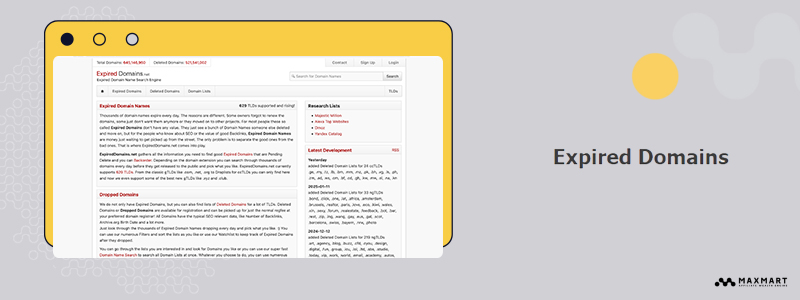
ExpiredDomains.net is a popular and powerful platform for monitoring both domain expiry and domain acquisitions. It provides a comprehensive database of expired, expiring, and deleted domains across various top-level domains (TLDs). This tool is widely used by domain investors, but it’s also a valuable resource for those looking to track the expiry dates of their own domains or acquire soon-to-expire domains. With a range of filters and metrics, users can evaluate domains based on SEO potential, backlinks, traffic, and more.
Pros:
- Free to use: Many core features are available without cost, making it accessible for users on any budget.
- Large database of expiring domains: Provides extensive listings of expiring and recently deleted domains, giving users plenty of opportunities for acquisition.
- Advanced filtering options: Search and filter domains based on metrics such as backlinks, traffic, keyword presence, SEO value, and domain age.
- Customizable watchlist: Users can create a watchlist for domains they are interested in tracking for expiry or acquisition.
- Multiple TLDs supported: Track expiring domains across a wide range of extensions, not just .com.
Cons:
- No automated renewal: ExpiredDomains.net focuses on monitoring and acquisition, so users need to manually renew their domains through their registrar.
- Interface can be overwhelming: The vast amount of data and filtering options might overwhelm users who only want simple domain expiry tracking.
- No native mobile app: While accessible via the web, a dedicated mobile app could improve usability for those needing on-the-go tracking.
Verdict: ExpiredDomains.net is a highly versatile tool that goes beyond simple domain expiry tracking, making it an ideal choice for domain investors or those looking to acquire high-value, expiring domains. Its free offering and advanced filtering options set it apart as a top tool in 2024. While it may not be the best fit for casual users who only want to monitor their domains, it is an excellent resource for those who want to dive deeper into domain investing and acquisition.
Pricing:
- Free Plan: Includes basic domain expiry tracking and access to the full expiring domains database.
- Premium Plan: $15/month – adds advanced filtering, SEO metrics, and domain value analysis for users with larger portfolios.
5. Dynadot

Dynadot Expiry Watch is a feature within the Dynadot platform designed to help users monitor and manage their domain expiry dates. It allows users to track when their domains are nearing expiration, ensuring timely renewals to avoid losing valuable web assets. With its automated notifications and renewal options, Dynadot Expiry Watch is ideal for individuals and businesses that want an easy-to-use domain expiry tool integrated into a well-known domain registrar. It also includes the ability to monitor expiring domains available for purchase, offering dual benefits for both expiry tracking and domain acquisitions.
Pros:
- Seamless integration: If you register your domains through Dynadot, the expiry watch feature works effortlessly with your account.
- Auto-renewal options: Dynadot offers the ability to set up auto-renewals, ensuring that your domains are renewed before their expiry dates.
- Customizable notifications: Get notified via email well in advance of your domain’s expiry, giving you plenty of time to take action.
- Support for multiple TLDs: Track expiry dates for various TLDs, not just the most common ones like .com.
- Domain marketplace: In addition to tracking your own domains, Dynadot’s Expiry Watch also allows you to keep an eye on soon-to-expire domains that are up for grabs, making it a good tool for domain investors.
Cons:
- Limited to Dynadot-registered domains: If your domains are hosted elsewhere, you won’t be able to monitor them through this tool.
- No in-depth analytics: While the tool offers essential expiry tracking, it lacks the advanced metrics or filtering options provided by some other tools.
- Requires a Dynadot account: You’ll need to register your domains with Dynadot to take full advantage of the Expiry Watch features.
Verdict: Dynadot Expiry Watch is a solid tool for users who are already part of the Dynadot ecosystem. Its straightforward expiry tracking and auto-renewal options make it an excellent choice for individuals or small businesses managing a few domains. However, the tool is best suited for Dynadot customers, as it doesn’t support domain monitoring from other registrars. If you’re already using Dynadot or plan to move your domains there, Expiry Watch is an effective way to ensure you never miss an expiry date.
Pricing:
- Free: Included with all Dynadot domain registrations; supports basic expiry tracking and notifications.
- Premium Plans: Domain acquisition features, like auctions and backorders, are available separately with various pricing tiers depending on the service.
6. GoDaddy Domain Expiry
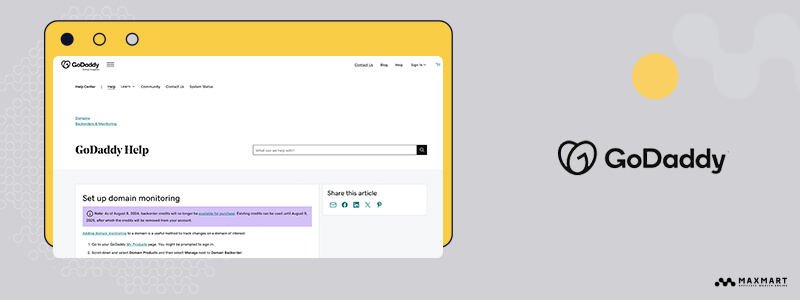
GoDaddy Domain Monitoring is a robust feature offered by one of the world’s largest domain registrars. It helps users keep track of their domain expiry search dates and provides alerts before a domain is set to expire. The tool integrates seamlessly with GoDaddy’s domain management platform, offering auto-renewal options and advanced domain monitoring. Additionally, GoDaddy’s Domain Monitoring service allows users to monitor domains that are about to expire and might become available for registration, making it useful not only for managing your own domains but also for acquiring expiring ones.
Pros:
- Comprehensive integration: Works flawlessly with GoDaddy’s domain management system, making it easy for GoDaddy customers to monitor their domains.
- Automated renewal: Auto-renewal options ensure that your domains are automatically renewed before expiry, reducing the risk of losing important domains.
- Expiration alerts: Receive notifications well ahead of your domain’s expiry date, giving you enough time to renew.
- Domain acquisition: In addition to managing your own domains, GoDaddy lets you monitor domains set to expire, offering you a chance to acquire them once they become available.
Cons:
- Restricted to GoDaddy domains: Like other registrar-based tools, GoDaddy Domain Monitoring only works for domains registered with GoDaddy.
- Pricing can add up: Some premium features, like back ordering expiring domains, come at an additional cost.
- Basic interface: While it gets the job done, the interface is not as customizable or feature-rich as some other domain expiry tools.
Verdict: GoDaddy Domain Monitoring is ideal for users who already manage their domains through GoDaddy. Its integration with the platform makes it easy to manage domain expiry, set up auto-renewals, and receive timely alerts. For domain investors, the ability to track expiring domains adds another layer of value. However, if you manage domains with other registrars, this tool will be of limited use. GoDaddy Domain Monitoring is a great option for those who prefer an all-in-one solution for domain management and expiry tracking.
Pricing:
- Basic Plan: Free – Includes domain expiry date monitoring, notifications, and basic management features for domains registered with GoDaddy.
- Domain Backordering: $24.98/year – This is for monitoring and backordering expiring domains that may become available.
- Premium Plans: Various pricing tiers for other advanced services, like domain auctions and bulk domain management.
7. ExpireBox

ExpireBox is a simple yet effective tool designed explicitly for tracking domain name expiry dates. Unlike many other domain monitoring services that come with a wide array of extra features, ExpireBox focuses solely on helping users manage the expiration of their domains. It sends you regular alerts and reminders, ensuring you never miss an essential renewal date. ExpireBox is ideal for those who want a straightforward solution without the bells and whistles of more complex tools.
Pros:
- Straightforward and easy to use: ExpireBox’s simplicity makes it perfect for users who just want basic domain expiry tracking without extra complications.
- Email reminders: Receive consistent alerts when a domain is nearing its expiry date, helping you stay on top of renewals.
- Supports multiple registrars: Unlike registrar-specific tools, ExpireBox allows you to track domains from various registrars in one place.
- Affordable: It offers budget-friendly plans, making it accessible for users with smaller domain portfolios.
Cons:
- No advanced features: While ExpireBox is great for basic domain expiry tracking, it lacks advanced functionality like domain auctions, back ordering, or in-depth analytics.
- Manual renewals required: The tool does not offer automated renewal options, so you’ll need to renew domains manually through your registrar.
- Limited integration: Compared to more robust domain management platforms, ExpireBox doesn’t integrate as seamlessly with other domain management tools or services.
Verdict: ExpireBox is a great option for users who want a no-frills solution to track their domain expiry dates. Its simplicity and ease of use make it ideal for individuals or small businesses with a few domains. However, if you’re looking for advanced features like automated renewals, back ordering, or analytics, you may find ExpireBox lacking. For straightforward domain expiry tracking, ExpireBox offers excellent value at an affordable price.
Pricing:
- Basic Plan: Free – Includes basic domain expiry tracking and email notifications.
- Pro Plan: $5/month – Allows tracking of up to 50 domains with enhanced alert features.
- Business Plan: $15/month – Supports up to 200 domains, with priority customer support and customizable alert settings.
8. SnapNames
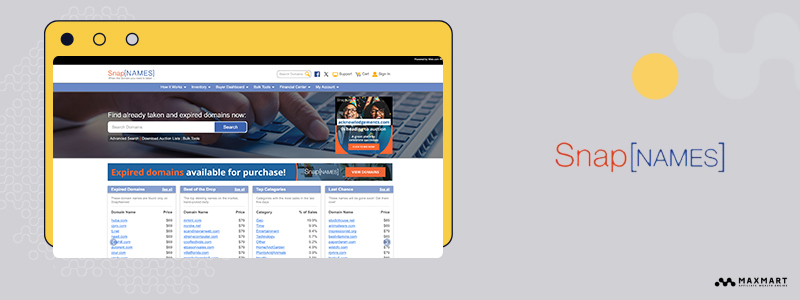
SnapNames is a domain marketplace and auction platform that specializes in helping users acquire expiring and deleted domains. While its primary focus is on domain back ordering and auctions, SnapNames also offers domain expiry tracking, making it a valuable tool for those looking to monitor domain expiration and potentially secure high-value domains as they become available. Its extensive auction system allows users to place bids on domains that are in the process of expiring, giving them the chance to acquire premium domains they may have otherwise missed.
Pros:
- Comprehensive domain back ordering: SnapNames is one of the leading platforms for back ordering domains that are about to expire, offering users a great chance to acquire valuable domains.
- Large marketplace: With access to over 30 million domains, SnapNames provides a vast selection of expiring and auctioned domains across a variety of TLDs.
- Auction bidding: The platform allows you to participate in auctions for expiring domains, potentially securing them before others can register them.
- Real-time monitoring: SnapNames offers real-time updates on the status of expiring domains, ensuring you stay informed and can act quickly.
Cons:
- Focus on acquisition rather than management: While SnapNames helps track domain expiry, it is primarily focused on domain acquisition, making it less suitable for those only interested in managing their own portfolio.
- High fees for premium domains: Acquiring high-value domains through auctions can lead to competitive bidding, driving prices up significantly.
- No automated renewals: SnapNames does not provide automated renewal services for your own domains, so you’ll need to handle renewals through your registrar.
Verdict: SnapNames is an excellent tool for users who are primarily interested in acquiring expiring domains. Its strong back ordering and auction system makes it one of the top platforms for securing valuable domains that are nearing their expiry. However, if you’re only looking for a tool to monitor and renew your own domains, SnapNames may not be the best fit, as its focus is on domain acquisition rather than portfolio management. For domain investors or businesses looking to expand their domain holdings, SnapNames is a powerful option.
Pricing:
- Domain Backordering: $69/domain – For backordering and monitoring expiring domains, with fees only charged if you successfully acquire the domain.
- Auction Fees: Varies – Auction prices depend on the competition for the domain, with bidding starting at $69 and rising based on demand.
- Additional Premium Services: Custom pricing for advanced domain search and acquisition tools.
9. Domaintally
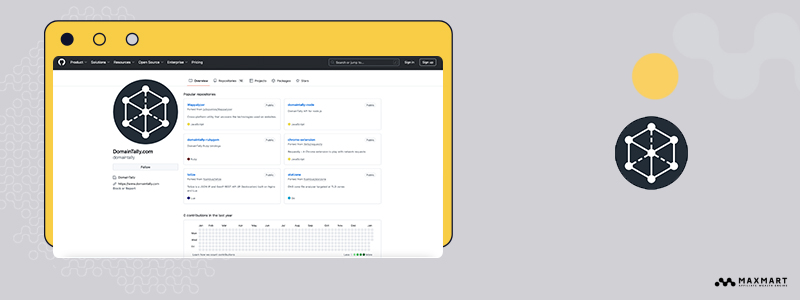
Domaintally is a domain analytics platform designed to help users track and analyze domain performance. While not a dedicated domain expiry tool, it offers useful insights into domain health and expiry, providing a holistic view of your domain’s metrics. Domaintally’s focus on SEO, traffic data, and domain analysis makes it particularly valuable for users who want to combine domain expiry tracking with performance analysis. Its ability to monitor domain expiry along with metrics such as backlinks, domain authority, and ranking data sets it apart from other basic expiry tools.
Pros:
- Comprehensive domain analytics: Domaintally not only tracks domain expiry dates but also provides in-depth performance metrics, including SEO health, traffic, and backlink data.
- All-in-one platform: If you’re managing multiple domains, Domaintally offers a central hub to monitor their expiry status and overall performance.
- User-friendly dashboard: The interface is intuitive and easy to navigate, offering a clear view of both expiry dates and performance data at a glance.
- Multi-registrar support: Track expiry dates for domains registered across different registrars, making it ideal for users with diverse domain portfolios.
Cons:
- Not focused solely on expiry: While it tracks domain expiry, the primary focus is on domain analytics and performance, so it may not be ideal for users looking for a pure expiry tool.
- Limited free features: The free version of Domaintally has restricted access to some of its advanced performance tracking features.
- No auto-renewal or in-depth expiry notifications: Domaintally provides basic alerts for domain expiry but lacks advanced renewal features or automated renewals.
Verdict: Domaintally is best suited for users who want more than just domain expiry tracking. Its powerful analytics features make it a great choice for domain investors or SEO-conscious users who want insights into their domain performance. While it may not be the best option for those focused solely on managing expiry dates, Domaintally shines as a multi-functional tool that combines expiry monitoring with performance data. If you want to keep tabs on both your domain’s expiry and SEO health, Domaintally is a solid choice.
Pricing:
- Free Plan: Includes basic expiry tracking and limited performance metrics.
- Pro Plan: $12/month – Provides advanced performance analytics, detailed SEO metrics, and more comprehensive expiry tracking.
- Enterprise Plan: Custom pricing – Tailored for large portfolios and businesses needing in-depth performance analysis and bulk domain expiry tracking.
10. WhoisXML API Domain Expiry Monitor

WhoisXML API Domain Expiry Monitor is a highly specialized tool designed for users who need advanced monitoring of domain expiry across various registrars. This service is part of the larger WhoisXML API suite, which provides a comprehensive set of domain data tools, including WHOIS data lookups, DNS monitoring, and security analytics.
The Domain Expiry Monitor is tailored for businesses, domain investors, and security professionals who need detailed insights into domain status and upcoming expiry dates. It is particularly useful for tracking large domain portfolios or keeping an eye on competitor domains that may soon expire.
Pros:
- Extensive monitoring capabilities: Provides real-time tracking of domain expiry dates across various TLDs and registrars.
- Customizable notifications: Set up alerts based on your preferences, including early warnings about approaching domain expiry.
- Bulk domain tracking: Ideal for users managing large portfolios, as the tool can track thousands of domains at once.
- Comprehensive domain data: As part of the WhoisXML API suite, you can access additional information like WHOIS history, DNS status, and security reports alongside expiry tracking.
- API access: Advanced users can integrate the Domain Expiry Monitor with their own systems using APIs, making it highly flexible for custom workflows.
Cons:
- Steep learning curve: The tool is designed for advanced users and professionals, so it may not be ideal for casual users or small businesses with only a few domains.
- Pricing: The service can be expensive, especially for users who only need basic expiry tracking without the full suite of domain tools.
- No direct renewal capabilities: While it provides expiry notifications, you’ll still need to handle domain renewals manually through your registrar.
Verdict: WhoisXML API Domain Expiry Monitor is an excellent choice for domain investors, businesses, and security professionals who require in-depth domain expiry tracking. Its integration with the broader WhoisXML API suite adds significant value, allowing users to track expiry dates while also accessing WHOIS history, DNS data, and security insights.
However, its advanced nature and higher price point make it less suitable for casual users or those looking for a simple domain expiry tool. If you need a powerful, customizable solution for monitoring large portfolios or competitor domains, this tool delivers unmatched depth and flexibility.
Pricing:
- Basic Plan: $49/month – Includes tracking for up to 500 domains with access to WHOIS and DNS data.
- Pro Plan: $149/month – Supports up to 5,000 domains with advanced monitoring features and API access.
- Enterprise Plan: Custom pricing – Tailored for businesses managing extensive domain portfolios or requiring large-scale API integration.
Conclusion
In 2024, managing domain expiry can be a crucial aspect of maintaining your online presence, and the tools we’ve reviewed can help you stay on top of expiring domains and potential acquisitions. Each tool offers unique features, whether you’re looking for simple expiry tracking or advanced monitoring and domain acquisition capabilities.
At MaxMart, we are committed to providing the resources you need to build a meaningful online presence. Beyond domain expiry tools, we offer in-depth guides on establishing websites, selecting the best domain tools, and using SEO tools to drive traffic and grow your brand. Our mission is to equip you with everything needed to succeed online, from practical website-building tips to expert advice on SEO strategies.


